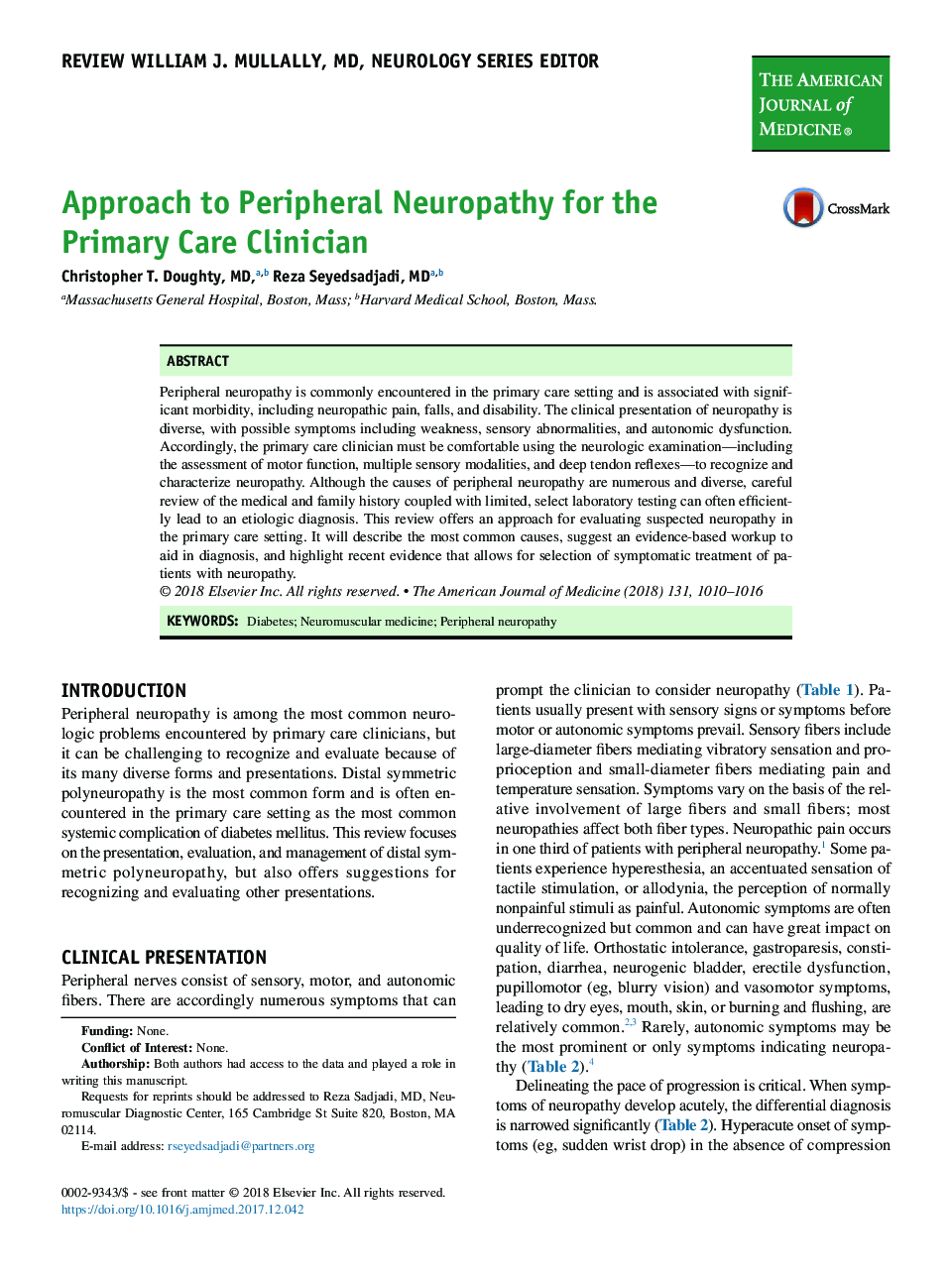| Article ID | Journal | Published Year | Pages | File Type |
|---|---|---|---|---|
| 11022868 | The American Journal of Medicine | 2018 | 7 Pages |
Abstract
Peripheral neuropathy is commonly encountered in the primary care setting and is associated with significant morbidity, including neuropathic pain, falls, and disability. The clinical presentation of neuropathy is diverse, with possible symptoms including weakness, sensory abnormalities, and autonomic dysfunction. Accordingly, the primary care clinician must be comfortable using the neurologic examination-including the assessment of motor function, multiple sensory modalities, and deep tendon reflexes-to recognize and characterize neuropathy. Although the causes of peripheral neuropathy are numerous and diverse, careful review of the medical and family history coupled with limited, select laboratory testing can often efficiently lead to an etiologic diagnosis. This review offers an approach for evaluating suspected neuropathy in the primary care setting. It will describe the most common causes, suggest an evidence-based workup to aid in diagnosis, and highlight recent evidence that allows for selection of symptomatic treatment of patients with neuropathy.
Keywords
Related Topics
Health Sciences
Medicine and Dentistry
Medicine and Dentistry (General)
Authors
Christopher T. MD, Reza MD,
